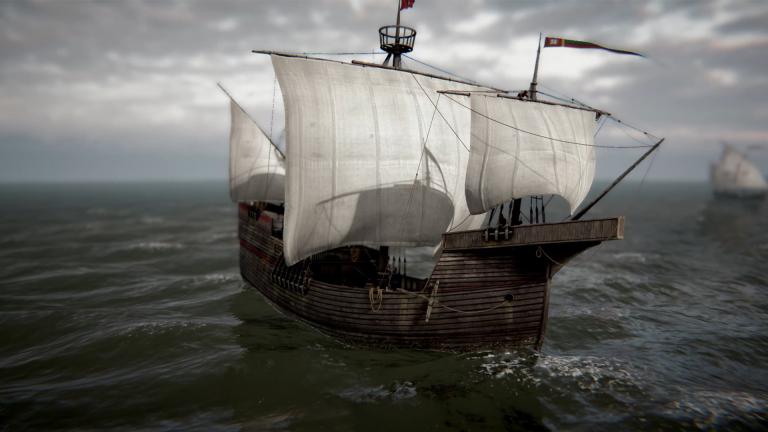
A Ship Through Time
Available now on Sky HISTORY or stream now on HISTORY Play

It’s rare for a wrecked ship to be rescued from its watery grave and subsequently put on public display. The most famous example is Henry VIII’s Mary Rose, which sank to the ocean floor in 1545 but was eventually raised in 1971.
Remnants of the Mary Rose’s hull can now be seen at Portsmouth Historic Dockyard. Within the next few years, the Welsh city of Newport could get its own similar tourist attraction. Remains of the Newport Medieval Ship, as it is officially known, have undergone extensive restoration and are now set to be reassembled and exhibited.
The Newport Medieval Ship was found by chance, buried under thick silt on the banks of the River Usk in 2002. It’s an extraordinary find, even compared to other salvaged historical shipwrecks, as it has been dated as far back as the late 1450s. Here’s more on what makes the Newport Medieval Ship, as revealed in Sky HISTORY’s A Ship Through Time, a major contribution to maritime archeology.
A Ship Through Time starts Monday 24 November on Sky HISTORY and HISTORY Play.
Newport locals will be familiar with The Riverfront Theatre & Arts Centre, which sits on the River Usk’s west bank. It was during the construction of this venue back in the early Noughties that workers inadvertently unearthed the Newport Medieval Ship.
When excavating what was intended to become The Riverfront’s orchestra pit, construction workers came across a peculiar articulated timber structure. As more and more of it surfaced, it increasingly appeared to be of historical significance.
Though authorities did not originally intend to permanently preserve the ship, public opinion led them to reconsider. The Welsh Government and Newport City Council freed up millions of pounds between them to fund the ambitious restoration project.
One tried-and-trusted way to ascertain the age of timber is to measure the width of its growth rings. This technique - known as dendrochronology - established that most of the ship’s timbers were likely to have been felled around 1449. The same study also revealed this wood to have come from northern Spain’s Basque region.
However, a later, more advanced analysis - this time using oxygen isotope dendrochronology - brought the ship’s likely construction date forward to the late 1450s. Cask pieces in the ship confirmed it to be a merchant vessel used for transporting wine - likely from the Iberian Peninsula to the Bristol Channel.
When the ship was rediscovered, the remains of a large surrounding cradle were found with it. Furthermore, some of the ship’s own pieces were dated to the late 1460s. It all constitutes evidence that, around this time, the ship was temporarily berthed at Newport for repairs.
This renovation work was apparently not completed before the cradle collapsed on the ship’s starboard side. The vessel would then have been quickly submerged by mud and water. Various missing pieces - including decking and masts - from the ship suggest that workers salvaged what they could from it before leaving it to its fate.
What type of crew did the Newport Medieval Ship have? It is likely to have been overwhelmingly Portuguese. This conclusion has been drawn from the large number of Portuguese coins - not to mention ceramics of distinctly Portuguese style - retrieved from the ship’s innards.
Nonetheless, it does not necessarily follow that the ship was also under Portuguese ownership. While it may well have been at some point, its demise in Newport suggests that, by then, a powerful British figure had taken the reins. Could this individual have been Richard Neville, 16th Earl of Warwick - popularly known as Warwick the Kingmaker?
Warwick was a pivotal player during the Wars of the Roses. He earned his ‘Kingmaker’ moniker from his canny ability to effectively replace one king with another as and when the incumbent displeased him. This was typified by his instrumental role in bringing the once-deposed Henry VI back to the English throne in 1470.
In Sky HISTORY’s A Ship Through Time, presenter Sean Fletcher sees compelling evidence that Warwick could have been the Newport Medieval Ship’s last owner. In November 1469, Warwick wrote a letter authorising payments for ‘the making of the ship at Newport’. As Fletcher hears, the word ‘making’, in this context, could refer to repairs.
As an island nation, Great Britain has a long history of seafaring success. You can learn much more about the UK’s maritime might by subscribing to the Sky HISTORY newsletter. We have many fascinating shows coming up and can email you fresh updates about them.